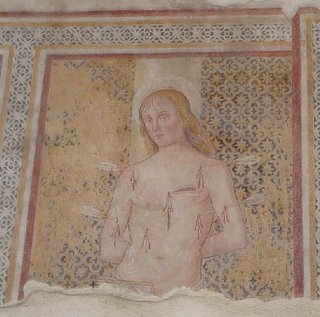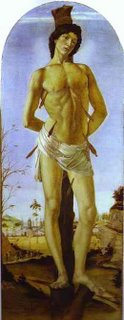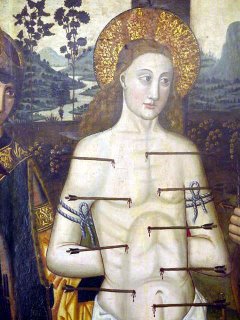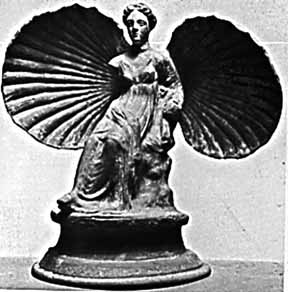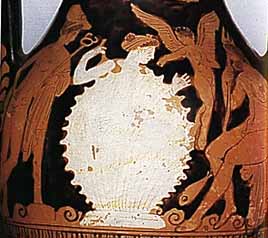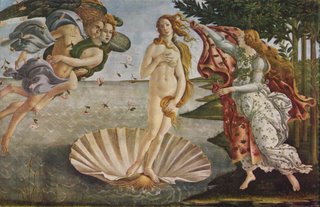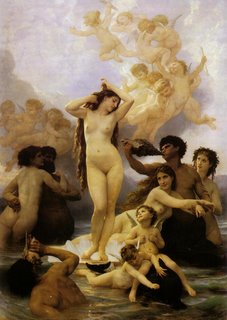
Recently, as I've mentioned before, my computer died (R.I.P. Halloween). Well, I've been prepping my new computer for my life-use, which of course includes ripping my music to the harddrive so that I can work and listen to music without hauling a billion CDs all over North America. High up on my "must have" list were my old favorites, both volumes of Everclear's
Songs From an American Movie.
Damn. That was the word. Damn. Not just one volume, but both were tanked - scratched and scraped to the point of un-rip-ability. Signs of hard use and much love, I suppose. Was my response sadness? Terror? Fear? No, I just got online and ordered copies of both. That very moment.
Let me preface everything that's about to come with some backstory. I had never heard of Everclear (as opposed to
Everclear) my freshman year in
college. Then one afternoon my pal Whittaker and I were headed off to Marion, Virginia to see a high school baseball game and he popped in another great album,
Sparkle and Fade. I was mesmerized.
[If you don't know Everclear's sound, well, obviously you don't have a radio. They are unquestionably the most popular band I've ever reviewed on my humble blog, which means you should have heard of them, even if you live under a hole. In France. Regardless, check
their myspace page (or even
MTV, for a nearly extinct "music video") if you have been under said hole.]
The reason I was so deeply effected by this music is difficult to describe. Perhaps it was simply the fact that Everclear's lyrics conjured up very particular images in my head, both about the world in general and about my own life in particular. Okay, no perhaps, that is definitely part of it. But part of it, as well, lies in the enormous power of Everclear's albums-as-symphonies. That's right. Rock-and-roll symphonies.
Note: I don't mean that they were symphonic in the sense of a strictly contructed single piece of music. Nor do I mean that they were symphonic in the sense of 1970s or 1980s rock sagas or, more terrifyingly, "concept albums." Rather, Everclear's albums explore themes from numerous directions - from the perspectives of multiple "characters," for instance, and as time progresses. The effect is, as the very album(s) I review now seem to indicate, similar in may ways to a movie - like a 1940s musical blended with post-Vietnam bipolarism. Indeed, having written these words, I wonder if instead of "symphonic" I should have used the phrase "operatic". Hmm.
Well, it was in June of 2000 that Everclear's
Songs From an American Movie: Volume One, Learning How to Smile premiered. I was in mourning for my Mom, agonizing over various relationship failures, and generally depressed. I had just moved in with Dad, had just graduated from Virginia, and I really had next to no idea what I was about to do next. And here comes this album, with its, well, its overpowering joy. And not only that, it was a kind of joy that was tempered by its realism - you had no sense that the participants in this artistic universe were free of past pains and anguish. Rather, you had a sense that they had overcome their personal anguish, found something brighter. Sure, there was a warning feeling to the final few tracks, overtones of problems to come, but alone the album made me optimistic, even unto the point of foolishness - blended with the emotional disorientation I was already deeply immersed in, well, the album, along with a dream largely inspired by the album (ah, Otis Redding), prompted me to engage in the single most spontaneous, and arguably self-destructive action of my life.
I can't bring myself to describe it again. I did it once -
you can read it here - but that, well, that's the last time, at least without alcohol, low-light, and excellent music.
I should have waited -
Songs From an American Movie: Volume Two, Good Time for a Bad Attitude, which came out in November of the same year, would have let me in on the joke. The first album, well, it was the lead-in, the woodwinds before the kettle drums. That's not to say that the album leaves one without optimism - it certainly doesn't. What it does do, however, is use optimism merely as an accent to pessimism. And it has a song whose mere name makes my backbone prickle.
"Halloween Americana"
This is not an album I can recommend one or two songs from. No, you need to listen to them both, perhaps not at the same time, but all the way through in no more than two sittings. From the first song, "Song From an American Movie, Part 1" to the final song, "Song From an American Movie, Part 2", the effect is astounding. Beautiful, complex, powerful. You will empathize with every conceivable emotion and you're empathy will touch on the subtle layers between the Crayola color emotions that we as humans are usually restricted to in our artistic endeavors.
My success came to fruition yesterday. My new albums finally came in the mail and I ripped them last night. My ears have been ringing ever since. Sigh.
Summary and Post-Script: I recommend, in the strongest of terms, all of Everclear's work. That said, the new Everclear album coming out in September is by a new band - led up by former lead singer Art Alexakis. That doesn't mean I won't buy it, it just means I'm taking a watch and see attitude. As to the other members of Everclear, well, Craig Montoya has co-formed a band named
Tri-Polar while Greg Eklund has co-founded another band, the
Oohlas. I can't testify to either of them yet, but I intend to check them out in the near future. Consider yourself warned.
 Wow. Trevor did it again. He introduced me to a site so dangerously addictive that it undoubtedly will have to be monitored by the FDA. Its name? Retrojunk.
Wow. Trevor did it again. He introduced me to a site so dangerously addictive that it undoubtedly will have to be monitored by the FDA. Its name? Retrojunk.



